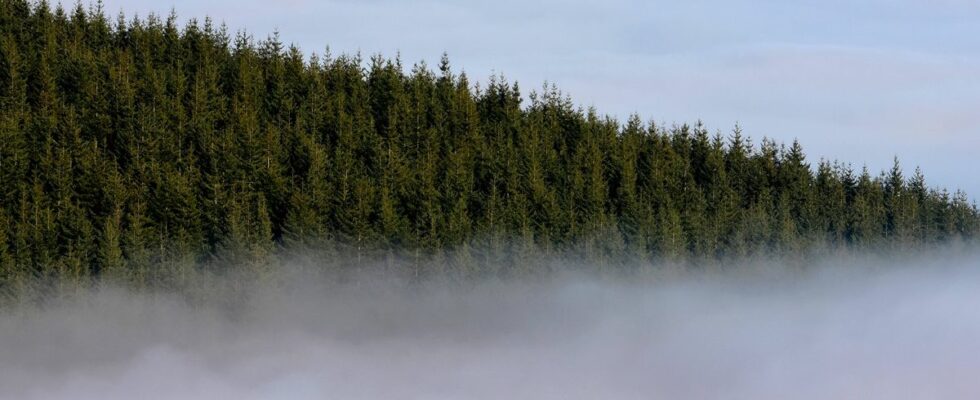Scarves, gloves and big coats will be out this week. The cold finally arrives, after a particularly mild autumn which even broke temperature records in October. From Thursday, temperatures drop below seasonal averages for at least three days, with highs between 2°C and 7°C on Saturday in the northern half.
“Values on average three degrees below normal for the season”, specifies Météo-France on its website. Not enough to speak of a “cold wave” for all that, as you may have seen in various press articles at the start of the week. It is a very specific meteorological term that responds to defined characteristics. “This week, we are going to talk more about a cold snap”, explains to 20 minutes Cyrille Duchesne, meteorologist at the Weather Channel. The specialist sheds light on what a cold snap is and why we see less and less of it.
What is a cold snap?
A cold spell is an episode of intense cold that lasts at least three days. “To speak of a cold wave, temperatures of 5°C below normal for the season are needed, in addition to three consecutive days with an average temperature across the whole country of 0.9°C and at least a day at -2°C”, develops Cyrille Duchesne. So the weather forecast for the week cannot be summed up as a cold snap, “we are far from it”, insists the meteorologist. François Jobard, meteorologist at Météo-France specifies on Twitter that a cold spell “requires days without thaw in the North and in the East, that is to say negative maximums”.
Like all intense weather phenomena, cold spells can be dangerous to health. Indeed, it is often accompanied by other phenomena such as snow and ice, “which can seriously affect daily life by interrupting road, rail or air traffic”, recalls Meteo France.
What to expect this week?
In the middle of the week, France will experience an undeniable drop in temperatures. The temperatures will be on an average of 4/5°C in the North and 7/8°C in the South. Several cities will thus lose many degrees between Tuesday and Saturday. In Lille, for example, the afternoon will drop from 7°C to 2°C four days later. In the South, the temperature difference will be much less pronounced.
In mainland France, the average temperature will drop to 2/3°C below seasonal norms: “The return of the cold is confirmed for the arrival of the meteorological winter on December 1”, summarizes the site of the Weather Channel. However, these levels of freshness do not correspond to a cold snap, strictly speaking. “It’s not a great cold equivalent to a cold snap, rather a cold snap”, abounds Cyrille Duchesne.
Why do we see fewer and fewer cold snaps?
If we compare this cooler period to a cold snap, it means that we are no longer so used to experiencing real cold snaps in France. “We have had so many mild periods, especially with a very mild autumn, it is rather in the feeling that we are going to be very cold but it is simply a classic return for the season”, develops Cyrille Duchesne. So inevitably, we lose certain bearings and as soon as we get a little cold, we have the impression that it is really freezing. We are more sensitive to temperature drops.
After the heat waves, the drought, the forest fires, this cold has become increasingly rare and is also a consequence of climate change. “Cold polar air has more difficulty descending towards temperate regions, including France, according to the meteorologist. So we experience less frequent periods of cold and less intense cold ”. A graph shared by François Jobard highlights this observation.
We can see in the graph a small wave dating from the winter of 2015, but the last big cold wave in France dates from 2012. It has been ten years since France experienced a “heavy winter”. And if it is very difficult to make seasonal predictions over the long term, it is very likely that in the future, cold waves will always be less and less frequent and always less intense.

